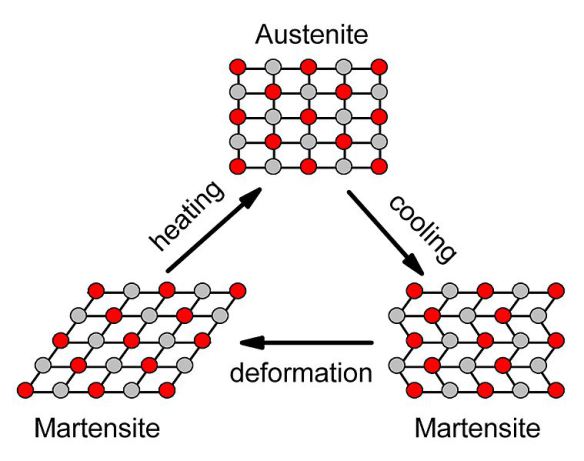You can do a lot with two elements – Nitinol
What does it look like?

The austenite and martensite structures that nitinol can form.
What is it?
This won’t comes as big news to regular readers of the blog, but you can do a lot with two elements! The massive range of materials and properties that you can tease out just from combining two building blocks is quite astounding. Much of this, of course, is down to their crystal structures and how the different sizes of the two elements cause changes in their structures.
One pretty spectacular example is a mixture of nickel and titanium, often known as nitinol. It has a couple of pretty impressive characteristics, being a shape memory alloy and also displaying superelasticity. Nitinol is a metal that can 'remember its shape'. This comes about because nitinol forms two crystal structures depending on the temperature, the high-temperature 'austenite' and the room temperature 'martensite' structures.
Nitinol wire can be forged into a shape, say a paper clip, at high temperature while the wire is in the austenite crystal structure. As this wire cools to room temperature, its crystal structure changes to the martensite structure – but the overall shape of the wire doesn't change; our paperclip will stay as a paperclip. The martensite structure is pretty amazing. It's able to take a lot of rough treatment without its bonds breaking; in fact, it will happily deform. What this means for our paper clip is that we can stretch it out so it is just a straight bit of wire. If you were to heat up our stretched out nitinol paperclip, then at some point the wire would change back to the austenite crystal structure, and jump back into the shape it started in!
Shape memory alloys, like nitinol, have found uses in many places – from bras to dental wire!






